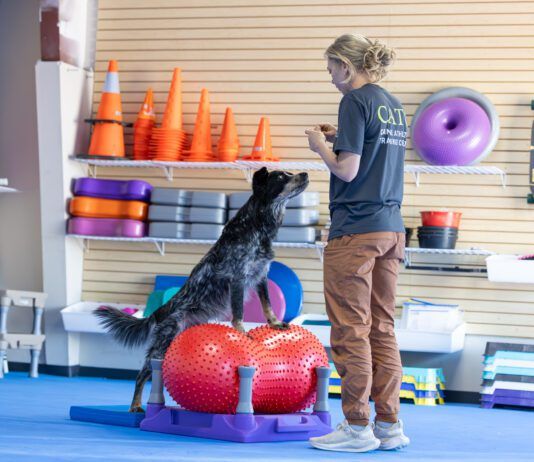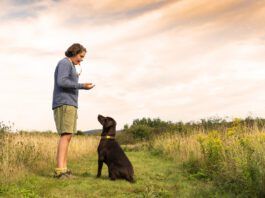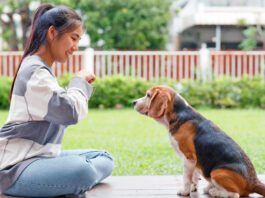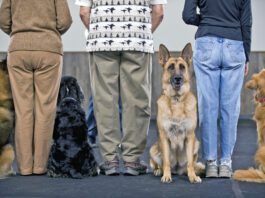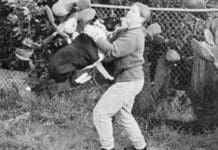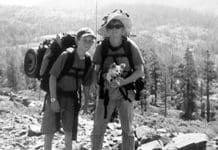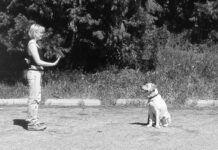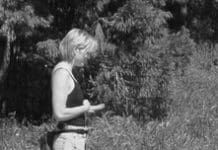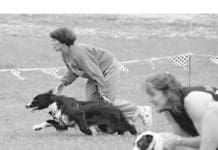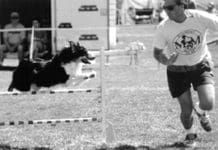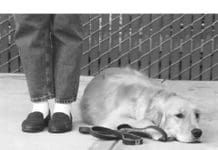Canine Athletic Competition and Sports Psychology
Whether you and your dog are road-seasoned competitors in canine sports, just playing around" in novice dog shows
Playing With Your Dog Increases Socialization and Relationships
Different dogs have different play styles. If I tried to play patty-paws with our Australian Kelpie, she would slink away in horror. Her idea of a rousing good time is to help me bring the horses in for their evening grain. Our Cattle Dog mix, Tucker, would rather fetch a stick or a tennis ball, or go jump in the neighbor's pond. Our Scottish Terrier's response to the paws activity would be a bored Whatever . . . " but he'd be delighted to engage in a game of "Let's roust critters out of the drainage pipe!" "
Causes of Reactive Dog Behavior and How to Train A Reactive Dog
“Reactive” is a term gaining popularity in dog training circles – but what is it, exactly? In her book Clinical Behavioral Medicine for Small Animals, Applied Animal Behaviorist Karen Overall, M.A., V.M.D., Ph.D., uses the term to describe animals who respond to normal stimuli with an abnormal (higher-than-normal) level of intensity. Take a deep breath and relax. We have positive training solutions for dogs who "go off" or "lose it" in certain circumstances.
Holistic Dog Care and Holistic Checkups for Athletic Dogs
It goes without saying that every dog should undergo an annual health examination, complete with laboratory tests to evaluate blood chemistry and composition. Hard-working dogs – whether they are athletes or used for emotional therapy work – should be taken to the veterinarian for additional exams if their performance or attitude sours. In addition to conventional veterinary examination tehcniques, Dr. Bessent employs an age-old practice, taken from traditional Chinese medicine: tongue and pulse examination of the dog.
Training the Hearing Impaired Dog
hearing and deaf. Using a treat in your hand
New to Positive Dog Training?
Switching to positive training? At first, it might be frustrating for you – and your dog. The benefits, however, will last a lifetime. In positive training, the goal is to help the dog do the right thing and then reward him for it, rather than punishing him for doing the wrong thing. If he makes a mistake, the behavior is ignored, or excused with an “Oops, try again!” to encourage the dog to do something else.
Dog Training Camp Programs
Camping means different things to different people, but to dogs, camping means fun! Like most things with the word camp" in them
Training Dogs with Hand Signals
Silent cues are useful in any situation where your dog can't hear you, whether he's across a field from you, with you at a parade, if he's deaf, or suffering age-related hearing loss. There are two philosophies about training dogs with hand signals. Some people like to use small, subtle signals, barely visible to the human eye. A tiny finger movement cues the dog to lie down. Another elicits a sit. A small wave sends the dog into heel position. Impressive it appears that the dog is mind-reading!
The Use of ‘Bait Bags’ in Dog Training
The arguments against bait bags are not so obvious. The most compelling is that the presence of a bait bag is like a flashing neon sign - an obvious cue to your dog that it's training time and treats are handy. I stand firmly in the middle of the bait bag debate. I shop for lots of lightweight, loose-fitting jackets with large pockets so I can stash my bags of treats comfortably on my person without turning on the neon sign. Of course, my dogs know that I have treats in my pockets, but I always have treats in my pockets, so the presence of treats is not the cue that training is happening.
Flyball Racing
Flyball racing is fast and furious. Most of all, it's a great time for both dogs and people! The first time I saw Flyball
Canine Agility Training: The Ultimate Team Sport
By now, if you're into dogs, you've probably heard about agility. Maybe you've even seen it in action or tried it with your dog. Agility is one of the fastest growing dog sports in the world, and with good reason it's fun! Of all of the dog things I've done
Understanding Reward Based Dog Training
In the 1950s, behavioral scientist B.F. Skinner developed a number of principles that are applicable to all living things with a central nervous system. He found that animals are likely to repeat behaviors that are enjoyable/rewarding to them, and not likely to repeat behaviors that result in something unpleasant (punishment). Neutral stimuli – things that don’t matter to the animal – don’t have an impact on behavior one way or the other. Skinner demonstrated that humans can use these simple principles to modify an animal’s behavior. Rewards are the most reliable way to deliberately increase an animal’s offered behaviors; conversely, punishment decreases those behaviors. (See “The Four Principles of Operant Conditioning,” next at end of story). We use these behavioral principles in dog training with great success.


